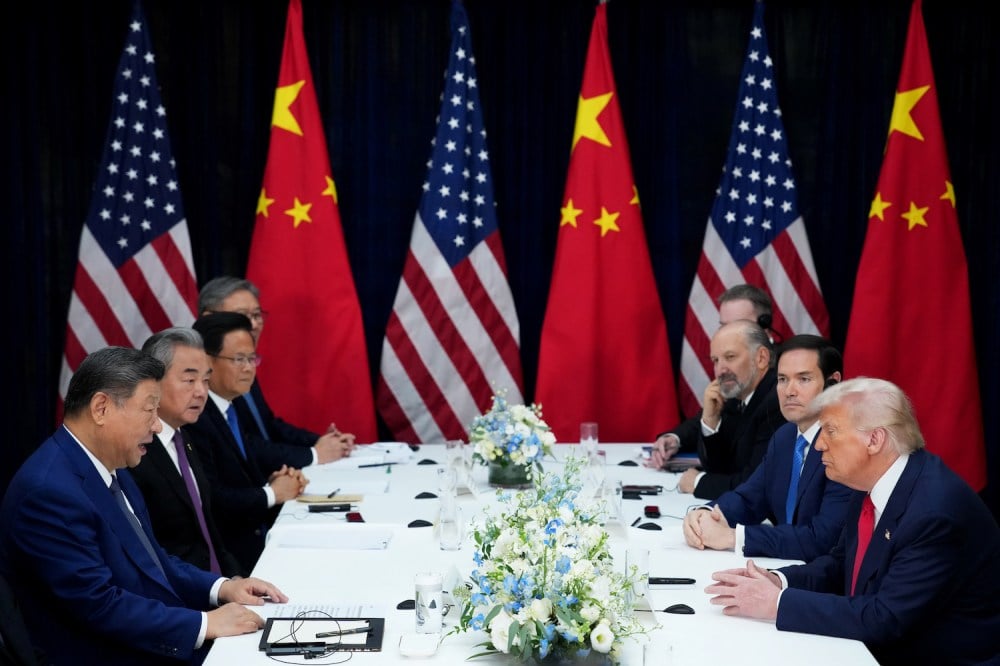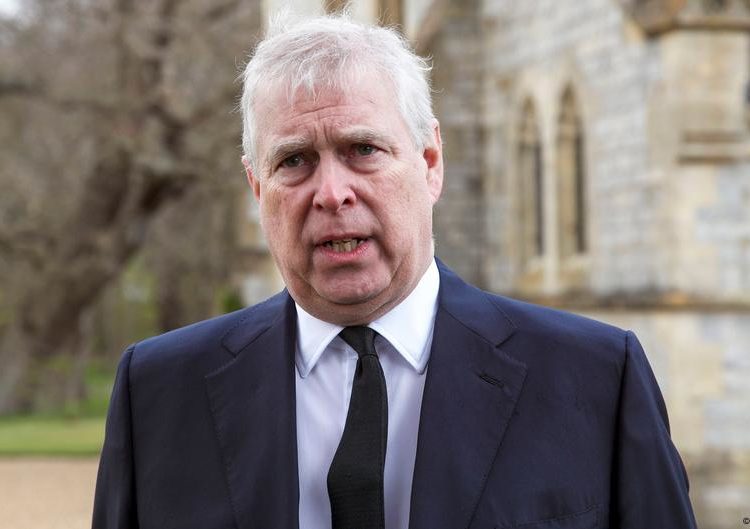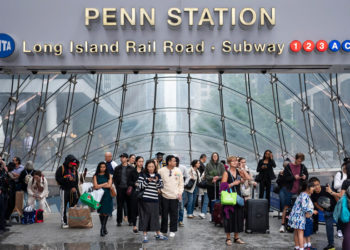U.S. President Donald Trump and Chinese President Xi Jinping used their first meeting since Trump returned to office to agree to a temporary truce on their trade tensions, stopping short of a full agreement but dialing back some of their harshest mutual countermeasures. It leaves the U.S.-China trade relationship only slightly worse than it was one year ago but less contentious than it could be.
Most of the details on the talks came from Trump, who spoke to reporters on Air Force One en route back to Washington and published a lengthy Truth Social post touting breakthroughs on soybeans, energy, rare earths, and fentanyl. Beijing’s readout was more circumspect, simply saying that the two leaders had an “in-depth exchange of views on important economic and trade issues, and reached consensus on solving various issues” and that the two sides “should work out and finalize the follow-up steps as soon as possible.” China’s Ministry of Commerce, however, confirmed some details that Trump laid out.
The two sides agreed to a one-year pause on further trade hostilities, leaving open the possibility of revisitation or renegotiation.
Here’s what we know about what was—and was not—agreed to.
Tariffs
The United States agreed to cut tariff rates on China—due to Xi’s promise to finally crack down on the production of fentanyl precursors—by 10 percentage points, leaving the average effective rate on most Chinese goods at 47 percent. That’s still high by historical standards—and higher than nearly all other U.S. trade partners—but it is less than the punitive rates posited earlier in the year or the 100 percent additional duty Trump threatened over China’s latest rare-earth export ban.
Soybeans
Trump said Xi agreed to resume Chinese purchases of U.S. soybeans and certain other crops that Beijing had suspended over the trade war, which has been a particular pain point for U.S. farmers. While in recent years China has ramped up its reliance on Brazil, and to a lesser extent Argentina, to meet its soybean requirements, China could still snap up some U.S. cargoes at a critical moment in the U.S. harvest season.
Agricultural goods were key to the Phase One trade deal that Trump and Xi signed during Trump’s first term in 2019 after another bruising trade war, with China committing to large purchases of U.S. soybeans. But China largely failed to live up to many aspects of that deal, with the second Trump administration launching an investigation as recently as last week into Beijing’s implementation of it.
On Thursday, U.S. Treasury Secretary Scott Bessent announced that China had agreed to purchase 12 million metric tons of soybeans this year, as well as a minimum of 25 million metric tons of soybeans annually for the next three years.
While the announcement has likely brought some relief to the soybean industry, economic strains remain. “I suspect they would like to see a return to normal, and this is not a return to normal, as far as I can see,” said Joseph Glauber, a former chief economist at the U.S. Department of Agriculture who is now at the International Food Policy Research Institute. “This is a trade agreement that has purchase minimums, that, again, are below what we’ve sold to China in the past.”
Energy
Trump said in his Truth Social post that China agreed to “begin the process of purchasing American Energy,” particularly from the state of Alaska, where a liquified natural gas (LNG) pipeline is in the works. However, the Alaska LNG project is not yet built and won’t be for some time.
Energy did merit a specific mention in the Chinese readout, which said Trump and Xi “agreed to enhance cooperation in economic, trade, energy and other fields,” but there were no further details offered and no mention of LNG or Alaska.
Li Shuo, director of the China Climate Hub at the Asia Society Policy Institute, said that he saw Trump’s announcement “as more of a political gesture.” The Trump administration has also harnessed prior trade threats and negotiations—including with the European Union and South Korea—to secure pledges for hundreds of billions of dollars in new fossil fuel deals in his bid to boost U.S. oil and gas companies.
Rare Earths
Since Trump launched his trade war against much of the world in February, China has consistently flexed its rare-earth muscle to strike back against the Trump administration’s threats. After multiple rounds of negotiations, trade tensions escalated again earlier this month when Beijing announced it would sharply expand its export rare-earth controls. Afterward, Bessent accused China of pointing “a bazooka at the supply chains and the industrial base of the entire free world.”
Beijing, for now, appears to have backed away from some of those measures. Trump struck a triumphant tone in his Truth Social post, declaring that “China has agreed to continue the flow of Rare Earth, Critical Minerals, Magnets, etc., openly and freely.”
But China’s Ministry of Commerce appeared more measured in its commitments. Beijing will “suspend the implementation” of relevant export controls announced on Oct. 9 for one year, as well as “study and refine specific plans,” Chinese state media reported a ministry spokesperson as saying.
Notably, the ministry did not address other critical mineral export controls that Beijing had issued prior to October—including ones on gallium and germanium, which are essential to semiconductors—and China still requires firms to secure export licenses for certain rare earths and magnets.
“I don’t see a modern world where China eliminates their export regime” on critical minerals, said Gracelin Baskaran, director of the Critical Minerals Security Program at the Center for Strategic and International Studies, a Washington, D.C.-based think tank. “What they’re looking to do is to retain that leverage.”
Concessions and Omissions
The United States and China will also suspend port fees they began charging each other’s ships earlier this month, the Chinese Commerce Ministry said. The port fees, which followed a trade investigation initiated by the Biden administration, threatened heavy and increasingly onerous docking fees on Chinese cargo ships; China responded in kind. That both sides are now backing down is a positive development, but since U.S.-flagged cargo ships barely ply the seas and don’t much unload in Chinese ports, that was not a big concession on Beijing’s part.
One notable absence from the conversation was semiconductor chips made by Nvidia, a key component of the race to build the most advanced artificial intelligence applications. Nvidia CEO Jensen Huang, who flew to South Korea on Thursday, has been lobbying for his company’s more advanced chips to be sold in China. U.S. policymakers over the past several years have imposed strict export controls on those advanced chips, citing a need to maintain U.S. technological dominance and a fear that China will use the chips to enhance its military. “For both countries, I really believe that having American companies serve that market is beneficial,” Huang told reporters in Washington, D.C., on Wednesday. Trump, however, told reporters on Air Force One that those chips were not discussed in his meeting with Xi.
Also not mentioned, according to Trump, was Taiwan, one of the most glaring points of contention between the two countries. Before the summit, Xi had hinted that he wanted to secure a U.S. pledge of noninterference or nonsupport for Taiwan’s independence movement, but it seems the issue was never raised. Russia’s war in Ukraine was raised, though, according to Trump, who concluded that China—Russia’s largest financial and material backer for its four-year war—would help him chart a path to peace.
The post What Trump and Xi Did—and Didn’t—Agree To appeared first on Foreign Policy.




